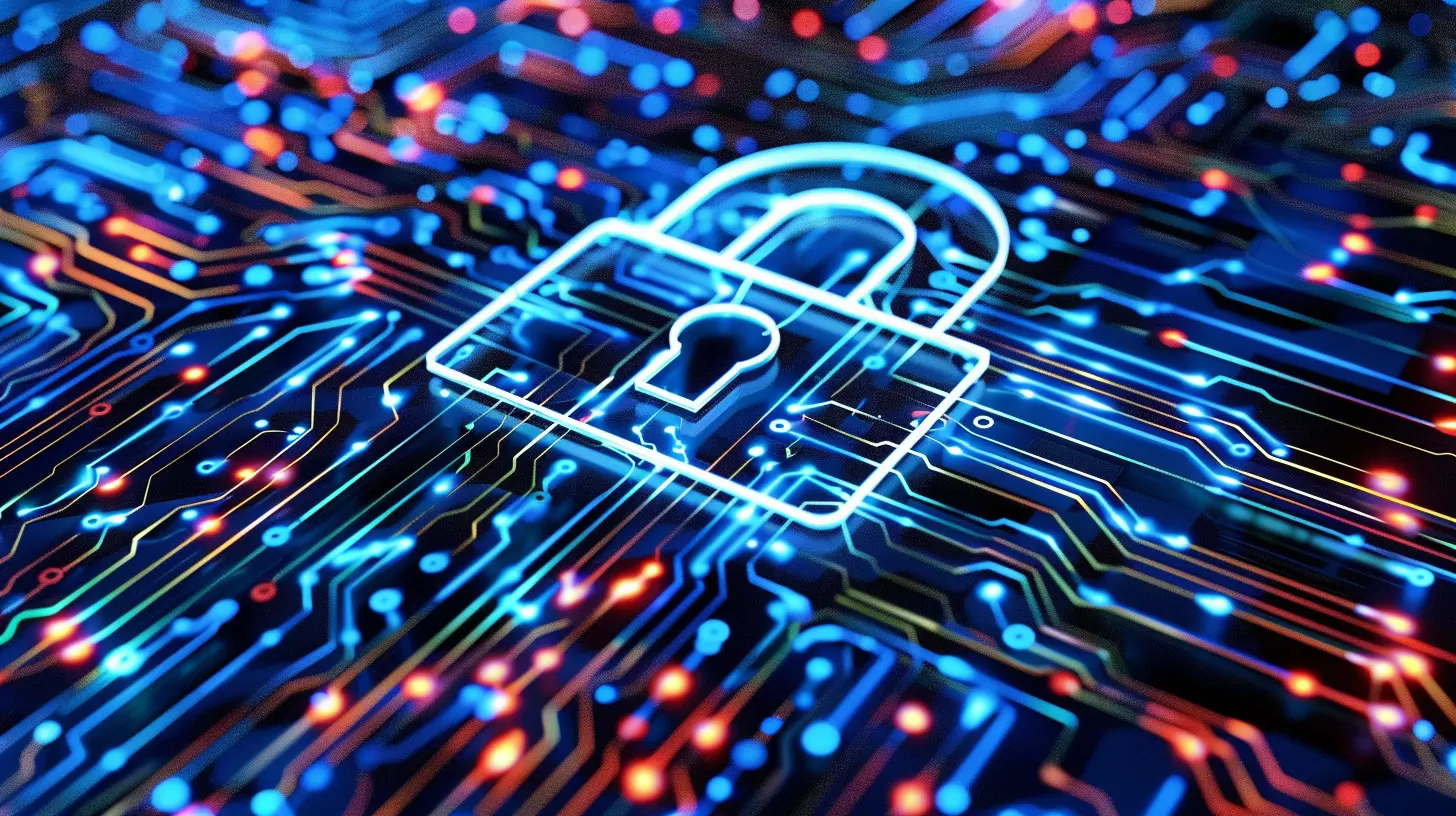The Importance of Continuous Employee Cybersecurity Training
7 October 2025
Let’s face it—cybersecurity threats are no longer just IT’s problem. They’re everybody’s business. From the intern replying to emails to the CEO managing sensitive company data, cyber attacks don’t discriminate. One simple click on a malicious link could cost your business thousands—or even worse, your reputation.
Here’s the good news: You don’t need a warehouse full of firewalls to stay safe. What you really need is a trained, alert team that knows what to look out for. That’s where continuous employee cybersecurity training comes in.
In this article, we’re diving deep into why consistent cybersecurity education isn’t just beneficial—it’s absolutely essential for every business in the digital age. So, grab your coffee and let’s break it down.
Why Cybersecurity Can’t Just Be a "One and Done"
Imagine you learned how to drive once, but never re-checked traffic rules again. Sounds risky, right? The same logic applies to cybersecurity. Just giving your employees a one-time course isn’t going to cut it anymore.Hackers are always evolving. Their strategies get sneakier, smarter, and more convincing. That phishing email? It probably looks like it came from your boss. That fake website? It might fool even the savviest tech person on your team. It’s a constant game of cat and mouse—and you don’t want to be the mouse.
Employees need regular, updated training to stay ahead. It keeps security top of mind and ensures everyone knows the latest tricks scammers are using.
The Human Factor: The Weakest Link in Cybersecurity
Let’s talk real talk—your company’s biggest cybersecurity vulnerability probably isn’t your software. It’s your people. No offense to your amazing staff, but even the best can fall for a well-crafted scam.Study after study shows this: human error is the leading cause of data breaches. Whether it’s reusing passwords, clicking on phishing links, or leaving sensitive documents lying around, it's the simple stuff that often causes the biggest headaches.
Ongoing training helps employees:
- Spot red flags in emails
- Understand secure password practices
- Recognize social engineering tactics
- Know what to do if something feels “off”
It’s like teaching your team to lock the doors and windows of the digital house every single day.
Cyber Threats Are Evolving—So Should Your Training
Cybercriminals are creative, if nothing else. From ransomware to deepfakes, the threats we face today are nothing like the ones we saw even just five years ago. So how can yesterday’s training protect your team from today’s threats?Spoiler: it can’t.
That’s why your employee cybersecurity training must be continuous. Regular updates ensure that your team is ready for whatever the hackers throw your way next—be it a new type of malware, a clever phishing campaign, or a zero-day vulnerability.
Training shouldn’t be static. Think of it more like software—it needs frequent updates and patches.
The Ripple Effect: How One Mistake Can Impact the Whole Business
One employee clicks on a suspicious link. What’s the worst that could happen?Well, let us paint a picture. That one click could lead to:
- Compromised customer data
- Disrupted operations for days (or weeks)
- Legal liabilities and fines
- Loss of client trust
- Massive financial losses
It’s not just IT’s problem anymore. It’s marketing’s problem if they lose customer data. It’s sales’ problem if their CRM access is locked up. It’s the whole company's problem if operations grind to a halt.
One weak link can break the chain. Continuous training helps reinforce every link.
Building a Security-First Culture
If you only talk about cybersecurity once a year, don’t expect your team to take it seriously. But if it’s part of the day-to-day culture—well, now you’re talking.Embedding security awareness into your workplace culture does a few amazing things:
- Employees look out for each other
- People feel comfortable reporting suspicious activity
- Security becomes second nature, not an afterthought
Think of it like a gym culture. When fitness is part of the company DNA, people work out more. Same for cybersecurity—daily awareness leads to smarter choices across the board.
What Continuous Cybersecurity Training Should Include
So, what does effective cybersecurity training actually look like? We're not talking about a boring PowerPoint once a year. You need something dynamic, bitesize, and practical.Here’s what to include:
1. Phishing Simulations
Fake phishing emails sent to employees test how well they recognize threats. It's better they mess up during a drill than on the real deal.2. Microlearning Modules
Short, focused videos or lessons that highlight specific topics—like password management or secure browsing habits.3. Real-World Scenarios
Walk employees through actual case studies of breaches and how they happened. It makes the risks feel real.4. Quizzes & Knowledge Checks
Keep everyone on their toes. Plus, it helps the info stick.5. Hands-On Practice
Let folks try out what they’ve learned in safe environments (e.g., sandbox simulations).Make it engaging. Make it relatable. Make it stick.
Leadership’s Role in Cybersecurity Training
Leaders set the tone. If the top brass treats cybersecurity like a big deal, so will everyone else. If not? Well, let’s just say it won’t be a priority for long.Here’s what leadership can do:
- Participate in training (yes, even the CEO!)
- Communicate the importance of cybersecurity regularly
- Allocate time and resources for ongoing education
- Reward good cybersecurity hygiene
Think of it this way: your team watches what you do more than they listen to what you say. So lead by example.
The Business Case: ROI of Continuous Training
Sure, cybersecurity training costs money. But you know what costs way more? A data breach.In fact, IBM’s 2023 report says the average data breach costs over $4.45 million. Ouch.
Compare that to a relatively small investment in high-quality, continuous employee training. You’re not just saving money—you’re protecting your brand, your customers, your operations. It’s like buying insurance, but even more proactive.
Training reduces risk. And when you reduce risk, you improve everything—productivity, trust, and peace of mind.
Regulatory Compliance Made Easier
Depending on your industry, there are probably cybersecurity laws and regulations you need to follow. Think GDPR, HIPAA, PCI DSS, and the like.Fail to comply, and you’re not just facing a hacker’s wrath—you could be dealing with fines, sanctions, and even lawsuits.
Good news? Ongoing employee training helps you stay compliant. It proves you’re taking the right steps to protect sensitive data—and regulators like that.
Remote Work Has Changed the Game
Remote work is here to stay. But it also opened up a whole new can of cybersecurity worms.Home Wi-Fi networks, personal devices, shared laptops—it all adds layers of risk. Without regular training, remote employees might not even realize they’re putting the company at risk.
Continuous cybersecurity training bridges that gap. It ensures remote teams are just as sharp and secure as those in the office.
How to Get Started with Continuous Cybersecurity Training
Feeling motivated? Ready to beef up your employee training program? Here's how to get started:1. Assess your current state – How often are you training? What’s missing?
2. Set clear goals – Aim for awareness, behavior change, and measurable improvement.
3. Choose the right tools – Pick platforms that are engaging, interactive, and easy to update.
4. Make it part of onboarding – Start training from day one.
5. Repeat. Reinforce. Refresh. – Make cybersecurity a never-ending conversation.
And if all else fails, just keep asking: “Would I know what to do if I got a sketchy email right now?” If the answer is no, it’s time for training.
Conclusion: Security Is a Team Sport
The days of thinking cybersecurity is just for the IT department? Those are over. In today’s digital landscape, everyone—from accounting to HR—is on the front lines.Continuous employee cybersecurity training isn’t just a “nice to have.” It’s your first line of defense, your insurance policy, and your secret weapon—all rolled into one.
So, start treating your employees like your biggest security asset. Because with the right knowledge, they are.
all images in this post were generated using AI tools
Category:
CybersecurityAuthor:

Remington McClain
Discussion
rate this article
1 comments
Fenn McEachern
Great insights on the necessity of ongoing cybersecurity training for employees! In an ever-evolving digital landscape, investing in continuous education not only protects your business but also empowers your team. Keeping security top of mind boosts confidence and fosters a proactive culture. Let's prioritize this essential practice together!
October 26, 2025 at 4:52 AM

Remington McClain
Thank you for your thoughtful comment! I completely agree—ongoing cybersecurity training is crucial for empowering employees and enhancing organizational resilience. Let's keep the conversation going on this important topic!


